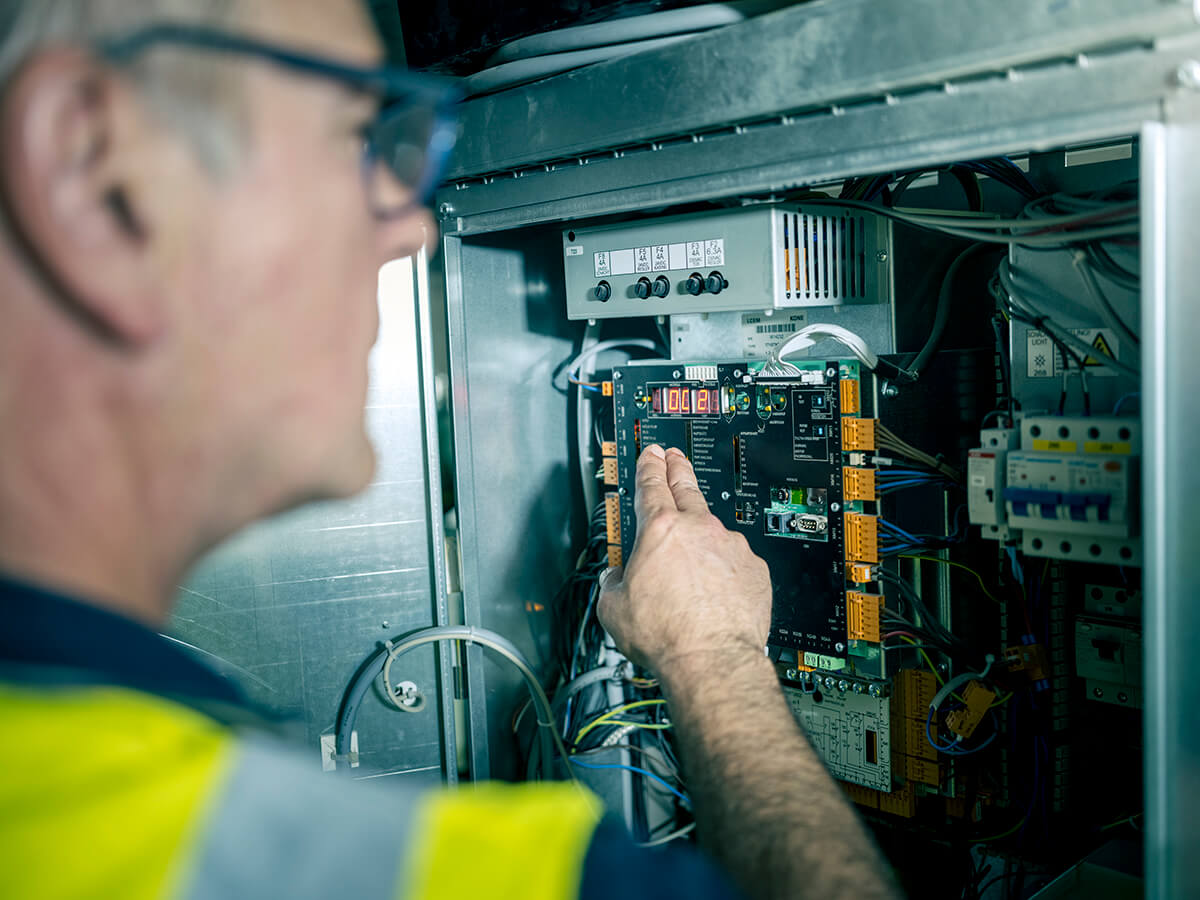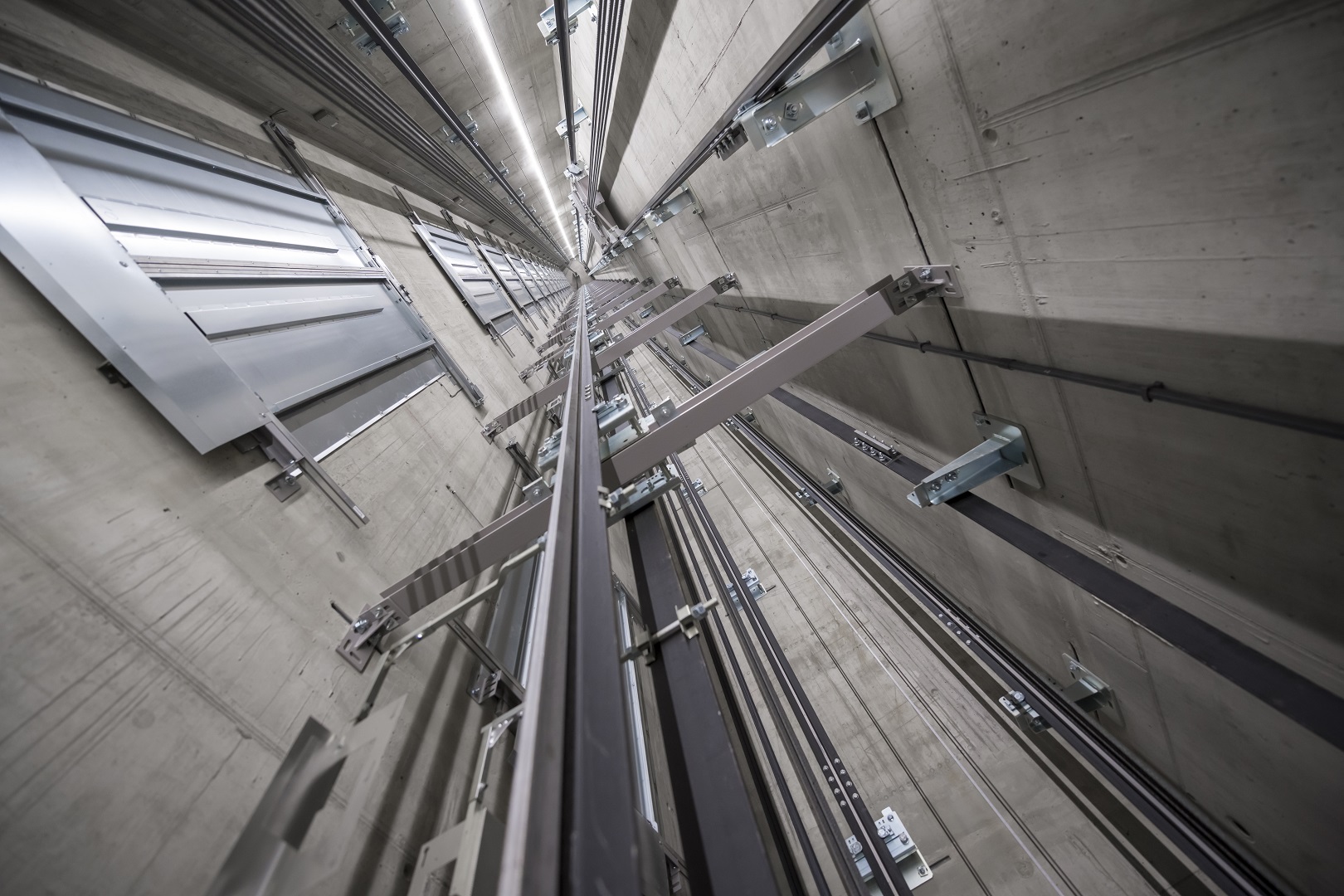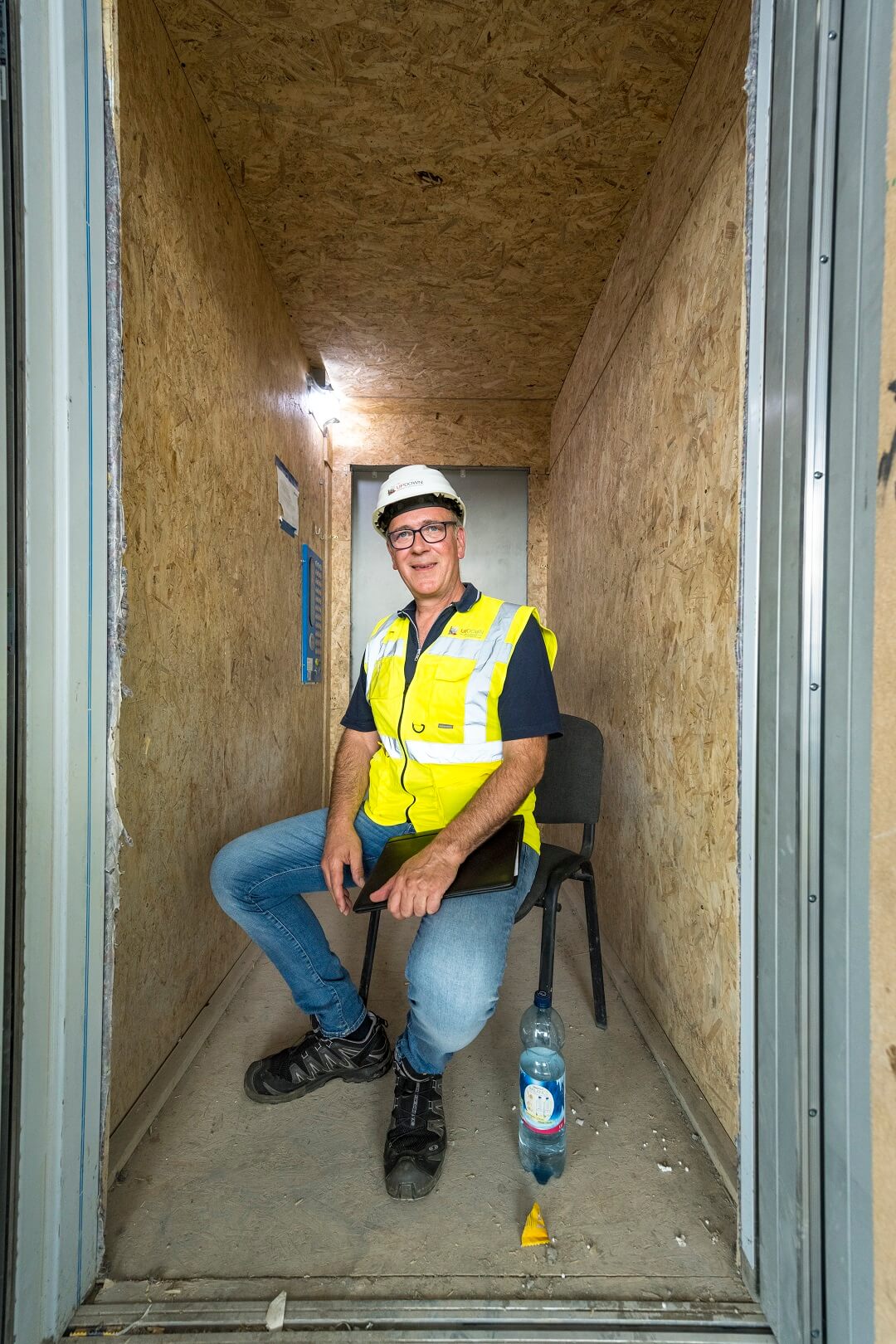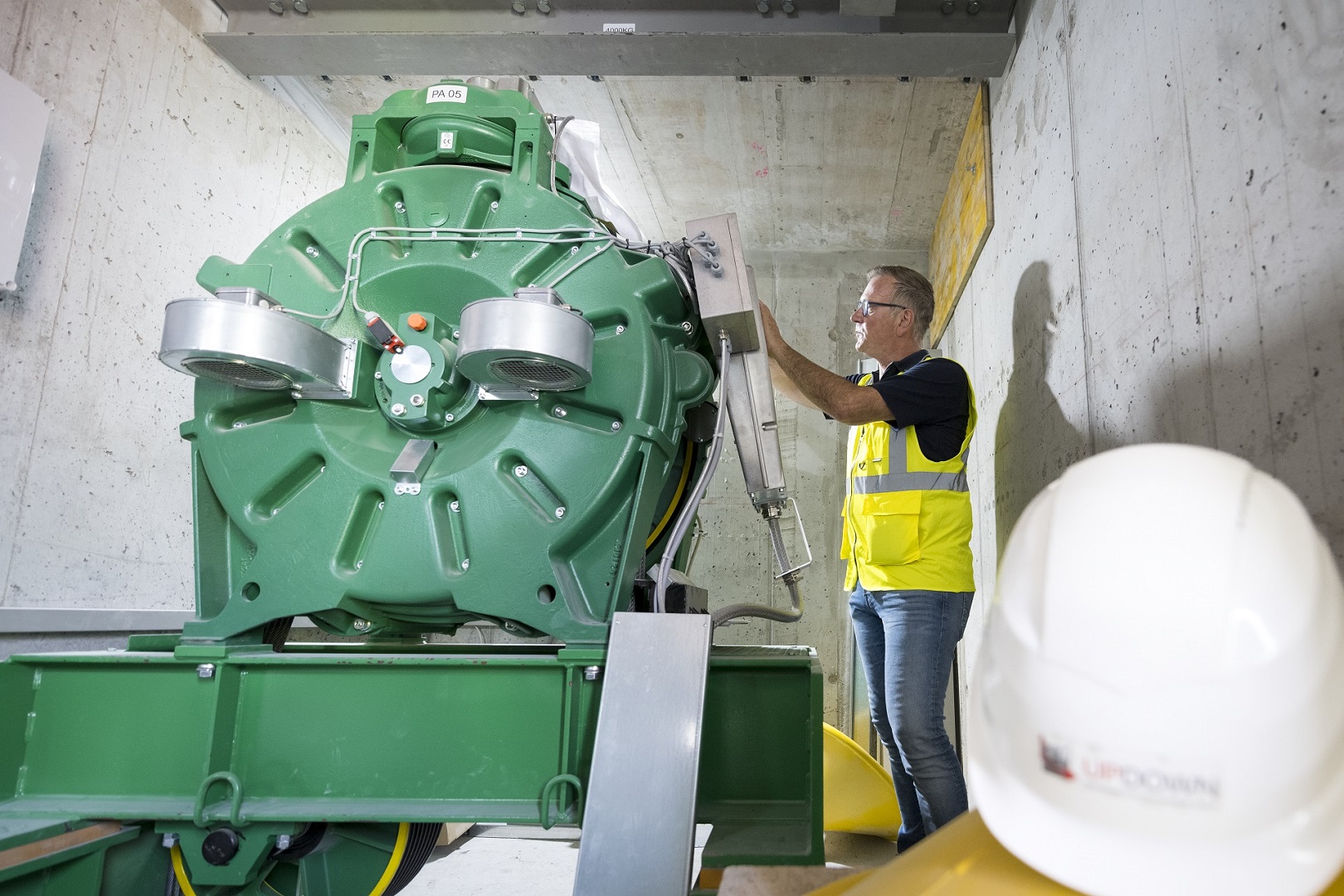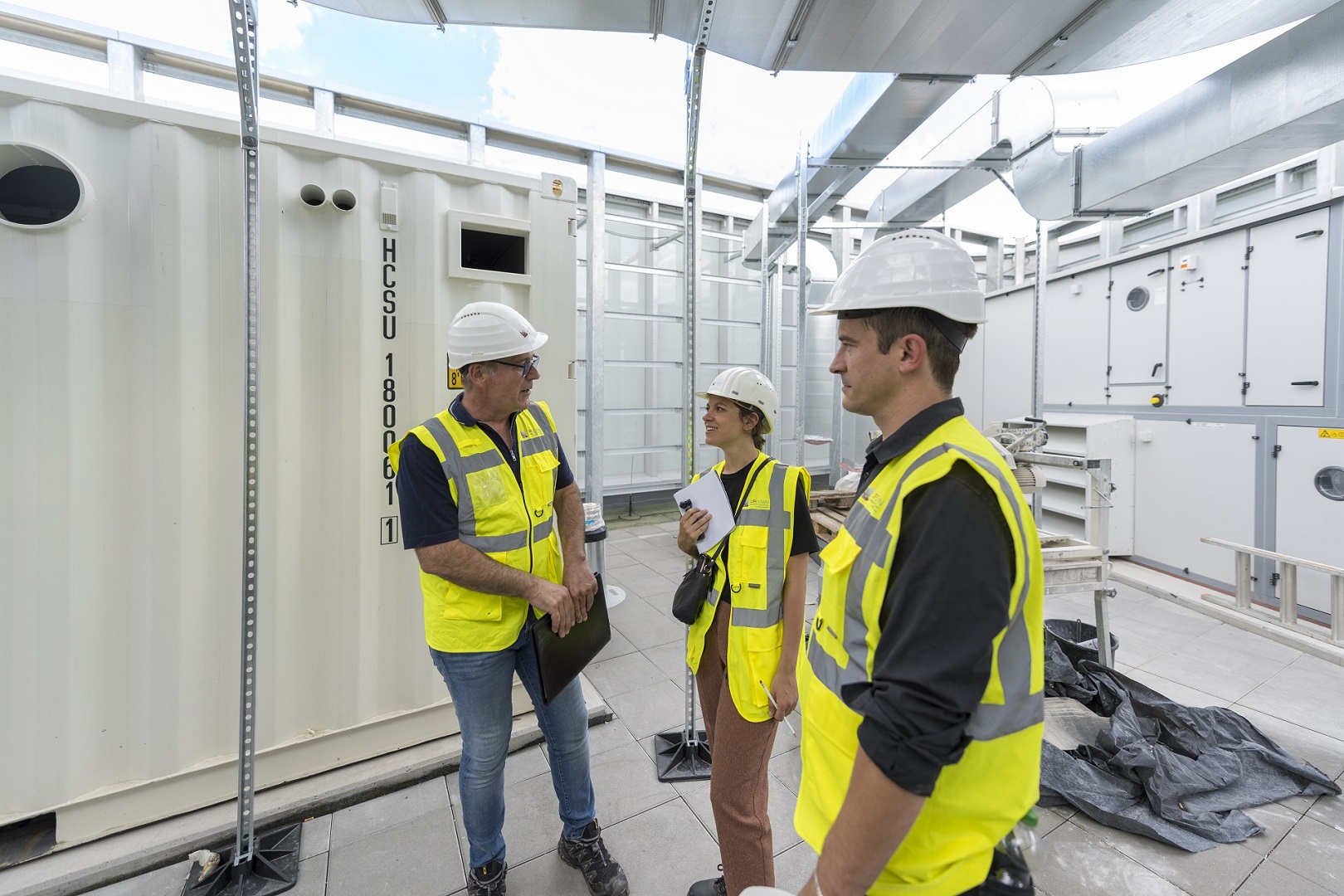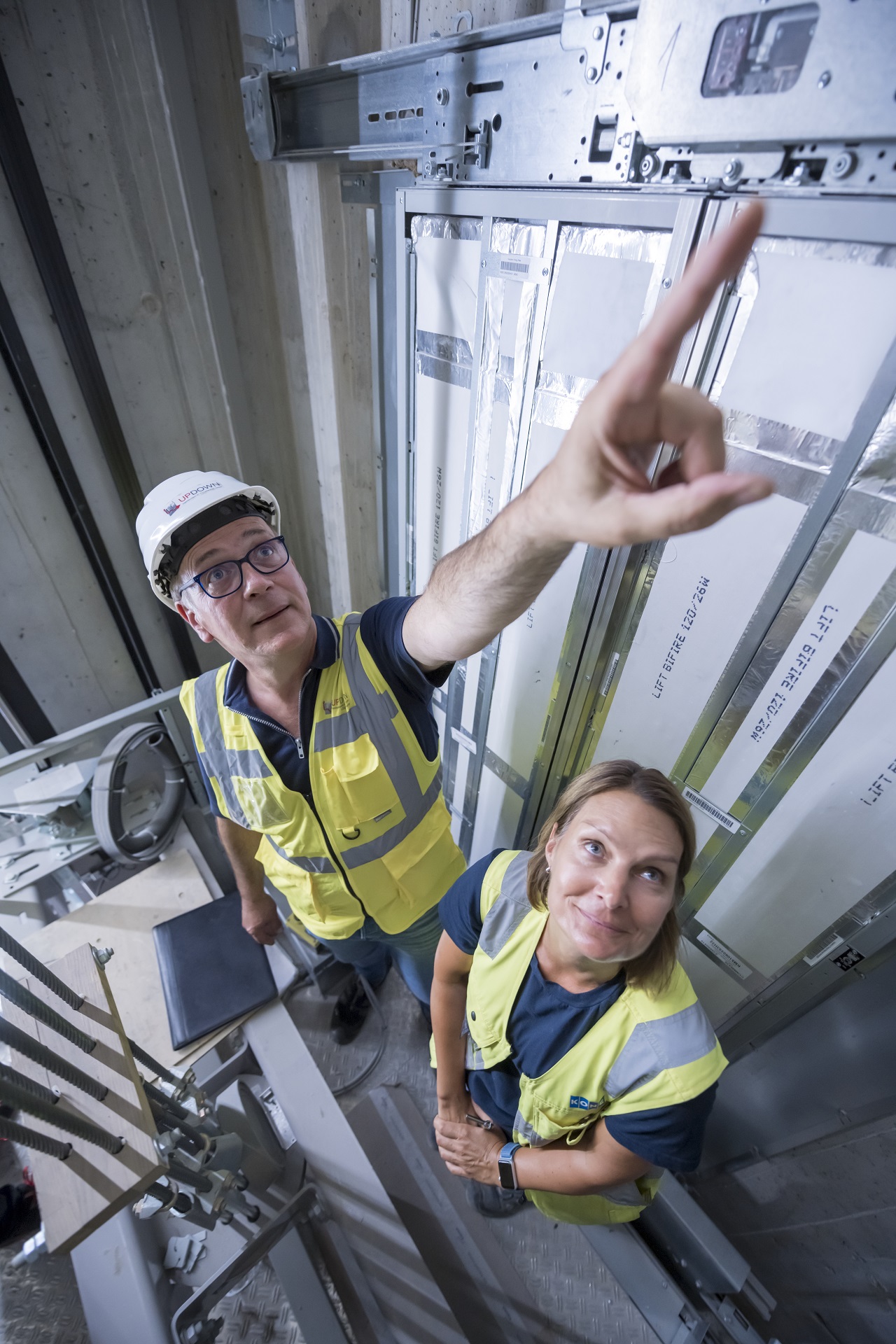Lurking in the tower
Ever gotten stuck in an elevator? A nightmare particularly for people who suffer from claustrophobia. To ensure that doesn’t happen, DEKRA inspects elevators on a regular basis, and our colleagues from the DEKRA subsidiary UPDOWN conduct detailed work during the planning stage for the elevator systems. That’s especially tricky in the tallest tower in Stuttgart.
The Porsche Design Tower in Stuttgart is currently a construction zone and won’t be completed until the end of 2023. Bernd Pätzold, CEO of the DEKRA subsidiary UPDOWN and his team are responsible for planning the elevator systems, like the one here, in what is currently the tallest building in the capital city of Baden-Württemberg. In addition to planning the systems, UPDOWN also determines their size and the requirements they need to fulfill. The result is a product requirements document with which the elevator manufacturer is commissioned.
“One of our tasks is to manage and coordinate the different crews involved in projects like these,” says Pätzold. For instance, electricians, elevator manufacturers, and building owners. UPDOWN has planned a total of six elevators for the 100-meter tower – despite the difficult conditions. After all, there isn’t much room in a tower like this. Space is limited when it comes to determining the elevator dimensions. There’s also the fact that many other parties want to install their technology in this confined space. “For this reason, the machine room and technology were installed at the top,” explains Pätzold. Indeed, the elevators’ heating, air conditioning technology, electronics, and machine room are positioned at the very top on the 24th floor. The two passenger elevators we were standing on just a moment ago are controlled from here. Weighing in at 1,350 kilograms each, the two elevators are kept in place with thick cables and powered by a motor that weighs 850 kilograms.
The six elevators in the building are currently used as construction elevators and equipped with thick particleboard to protect the interior walls. Aside from the two passenger elevators mentioned above, there are an additional two in the lower section as well as an elevator for the underground garage and a fire service access elevator.
Our task is to manage and coordinate the different crews involved in projects like these.
Bernd Pätzold
Rooms with a view
The lower section of the tower will house the offices of the automotive company based in Stuttgart. A total of 168 hotel rooms will be located higher up, starting on the ninth floor, and offer a nice view of the Stuttgart basin and vineyards. Bülow AG is the property owner in the project, for which UPDOWN planned the elevator systems in the tower next door, the Stuttgart Skyline.
“As conveyor engineers, we begin by asking ourselves two questions,” says Pätzold. “First of all, how many people need to be transported? And second, what else will be transported?” Using a program that simulates the expected flow of people, the UPDOWN engineers calculate how many elevators will be required in
the building, and then compare this with the current applicable standards. The hotel elevators in the Porsche Design Tower in Stuttgart are designed to hold a maximum of 18 people. No more than 16 people are permitted inside the fire service access elevator, and ten inside the lower elevators that serve the offices and the parking garage.
Prepared for emergencies
The two elevators in the hotel section of the Porsche Design Tower have a unique feature: each one of them functions as an evacuation elevator for the other. “If one of the two elevators breaks down, it doesn’t affect the control of the other one. The functional elevator pulls up alongside the stuck elevator, and the two elevators are connected via a ramp,” says Pätzold, describing the rescue operation. “This provides technical experts and, if necessary, emergency services with access to the stuck elevator.” The ramp is just 80 centimeters wide, which means passengers need to remain calm. “This technology is not all that common in elevators and offers a real benefit in worst-case scenarios.”
From regional to national
The UPDOWN engineers have seen their fair share of unique projects, as the DEKRA-owned subsidiary celebrated its 25th-anniversary last year. UPDOWN began in 1997 as a small planning agency with four employees. In the mid-2000s, DEKRA entered the field of elevator testing, and acquired UPDOWN in 2008. “Back then, we were still a small, close-knit company of six people,” Marco Genning, one of the four founding fathers, recalls. UPDOWN is now represented at ten locations throughout Germany and thus covers planning business in all key regions.
In addition to planning new elevator systems, the elevator specialists’ tasks also include modernization, general elevator management, and expert reports. “Despite the regional distance between our offices, we’ve remained a cohesive team. That has become clear especially over the past three years when personal interaction was reduced to a minimum,” says Pätzold. “I couldn’t be prouder of UPDOWN’s progress – we’ve developed from a regional to a nationally established planning agency. It’s nearly impossible to imagine the world of conveyor technology without us.” And this planning agency doesn’t shy away from a 100-meter-tall challenge.
